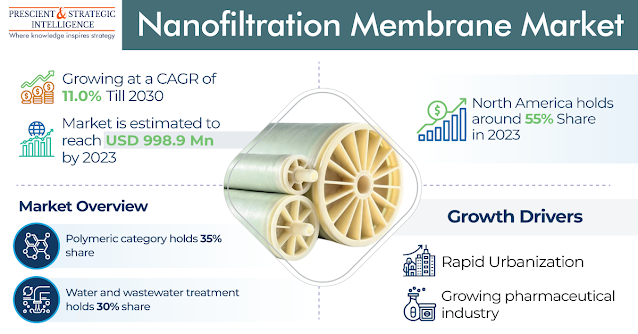The nanofiltration membrane market was USD 998.9 million in 2023, which will increase to USD 2,051.7 million, with an 11.0% CAGR, by 2030.
This progression is because they retain magnesium and calcium ions and assist in the separation of molecules. Also, these products are employed in the dairy sector for lactose demineralization and concentration.
Moreover, across various regions, particularly North America and APAC, the requirement for dairy products is rising, which will, sequentially, aid the industry expansion.
There are extensive applications for nanofiltration membranes owing to their low operating pressure, high flux, and high retention of multivalent anion salts. Also, they necessitate low operational or maintenance expenses.
Furthermore, the application of nanofiltration is growing in desalination plants, for producing freshwater for drinking purposes at a low expense. Additionally, the method is eco-friendly and is employed for pretreatment, before reverse osmosis and thermal processes.
The polymeric category, on the basis of type, is the major contributor to the nanofiltration membrane market, with a 40% share. This can be because of the utilization of these types in the softening and sterilization of water.
Moreover, the polymeric variant functions at low pressures, to provide very effective filtration, because of which it can be employed in wastewater treatment.
Furthermore, due to the growing requirement for freshwater that is safe for consumption, the need for different filtration methods has increased. In this regard, the speedy urbanization, rapid industrialization, and mounting populace help in this category expansion.
The hybrid category is advancing at a significant rate. This is because of the low hydraulic pressure, less flux decline, and rapid flux recovery after cleaning, produced by membrane fouling.
APAC will advance at the fastest rate, of 11.3%, during this decade. This is because of the growing requirement for the purification of water for domestic and industrial uses. In addition, end users are more actively concentrating on chemical-free water treatment.
With the advancing rate of urbanization and the rising pharmaceutical sector, the nanofiltration membrane industry will advance continuously in the coming years.
